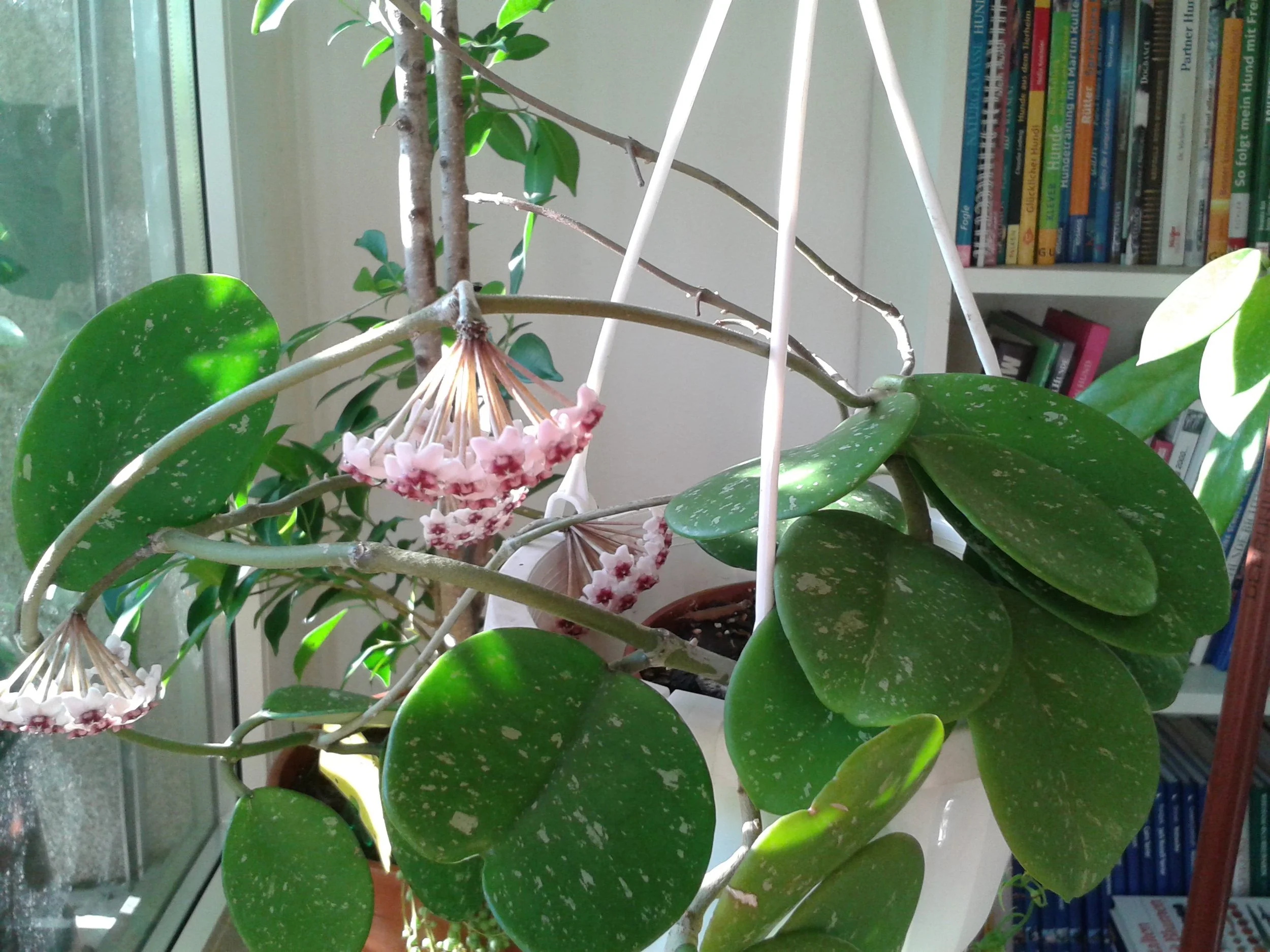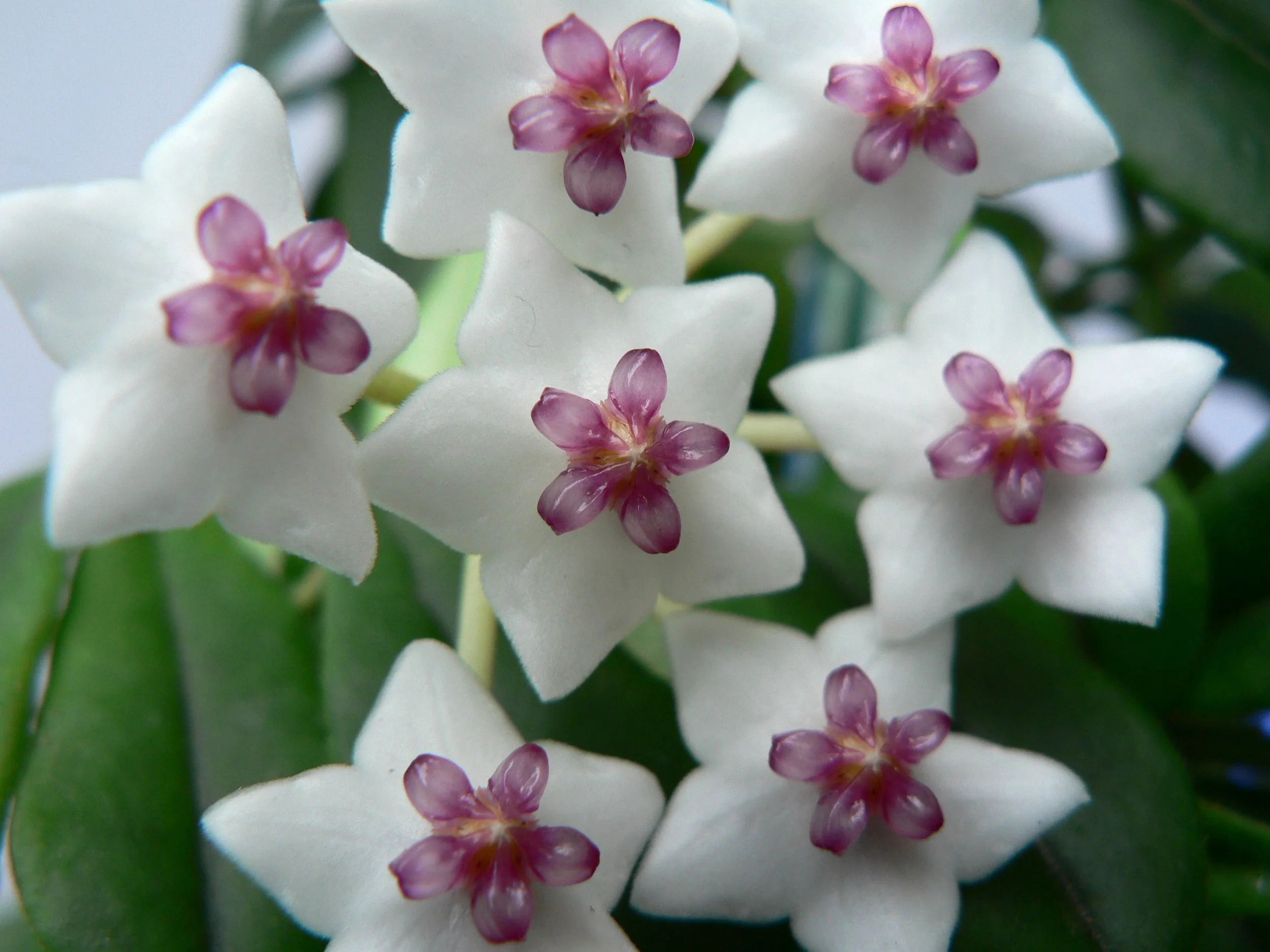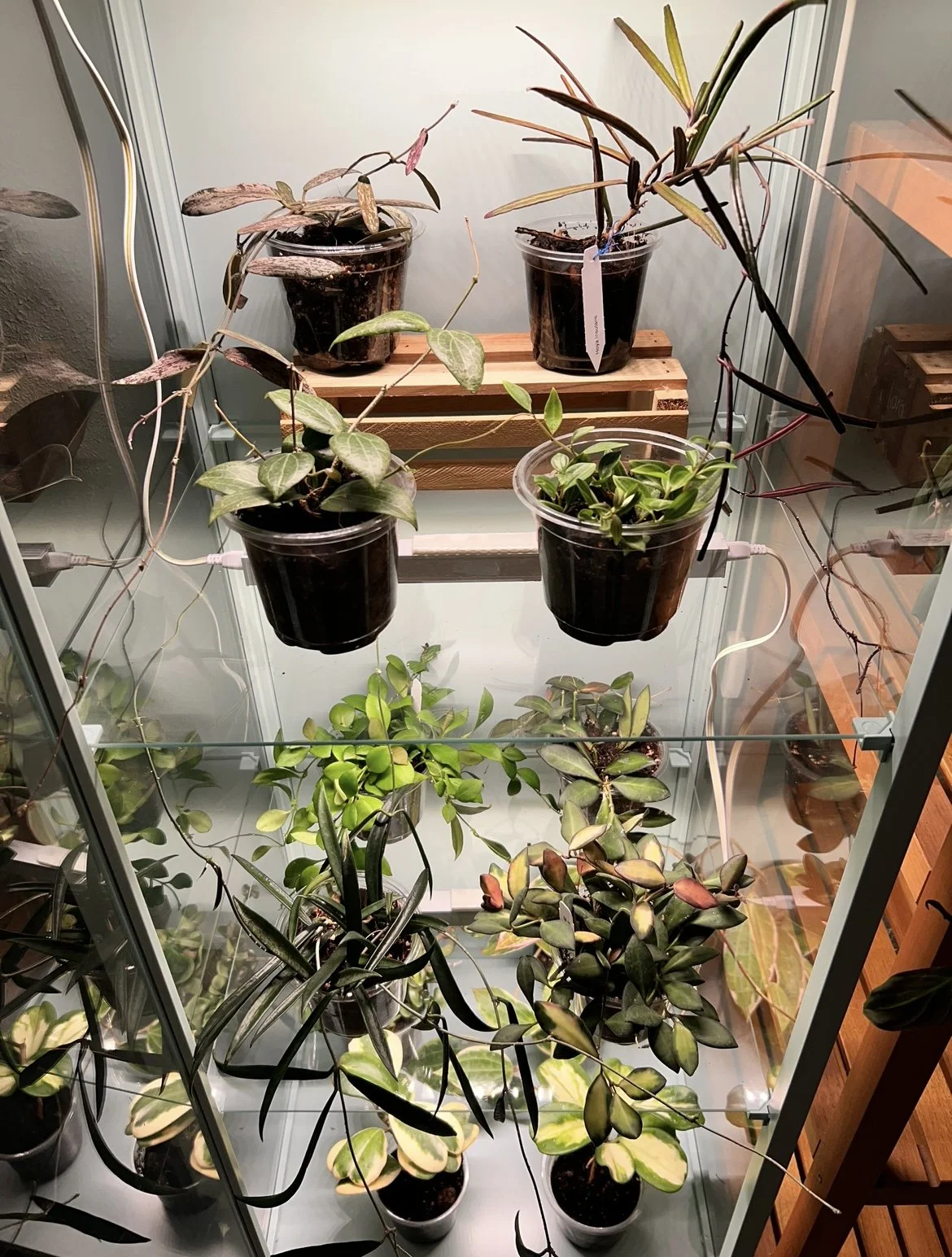Hoya Watering 101: Learning to Listen to Your Plants
Hoya obovata in bloom, picture by Wikimedia Commons
If there’s one topic that makes or breaks a Hoya parent, it’s watering.
It sounds simple, right? But ask ten plant lovers how often they water, and you’ll get ten very confident — and very different — answers.
Here’s the truth: there’s no perfect watering schedule.
What matters is learning how your plants tell you what they need, and trusting yourself enough to listen. There’s no perfect watering schedule — just you, your plant, and the process of learning what works best in your space.
Why Hoyas Are So Picky About Water
Hoyas come from environments where rain doesn’t always soak the soil — they often grow on trees or rocky cliffs, where roots get a quick drink and then dry fast.
Hoya lacunosa, picture by Wikimedia Commons, edited by Catey Plants
That means they like:
Moisture, but not sogginess.
Air around their roots, not mud.
Consistency, not guessing games.
When we grow them in pots, it’s our job to mimic that natural rhythm — not perfectly, but close enough that they feel at home. The right soil helps, but how and when you water brings it all together. Check out my last post talking about The Perfect Hoya Soil Mix!
How to Know When It’s Time to Water
Forget the calendar — your Hoya doesn’t care what day it is.
Instead, try these signs:
Weight test: Pick up your pot. If it feels light, it’s probably time to water.
Touch test: Stick your finger one to two inches deep — if it’s dry, go for it.
Leaf test: Are the leaves slightly soft or beginning to wrinkle? That’s your cue.
Here’s where it gets interesting: the pot size, maturity, and growth stage of your plant all matter.
Smaller pots dry out faster because there’s less soil volume to hold moisture.
Larger pots stay wet longer — so even if the top feels dry, the bottom might still be damp.
Young cuttings or smaller plants need a bit more frequent attention since their roots are still developing.
Mature Hoyas can usually go longer between waterings thanks to well-established root systems and thick, water-storing leaves.
And that’s the key — those thick, waxy leaves are built for storage. They act like mini water tanks, allowing the plant to ride out short dry spells without stress.
In fact, a little bit of drought is often beneficial.
Slight drying between waterings encourages stronger roots and can even help trigger peduncle and bloom production.
Hoya bella bloom, pictured via Wikimedia Commons, edited by Catey Plants
🌿 But here’s the balance: occasional drought is fine — chronic drought isn’t.
Letting your Hoya’s leaves wrinkle slightly before watering is a good signal, but letting them stay shriveled for too long can lead to permanent creases or thin, leathery spots that never fully recover. Think of it as strength training for your plant — short, safe dry periods make it more resilient.Over time, you’ll learn to spot that “just right” moment — when the leaves feel a little softer, the soil feels mostly dry, and your plant is ready for a good drink.
🌱 Pro tip: When in doubt, check the roots if possible — light-colored, firm roots mean they’re happy. Dark, mushy ones mean you’ve gone too far.
How to Water (The Right Way)
When it’s time to water, give your Hoya a deep, thorough soak. Don’t just drizzle on top — let the water run through the pot and out the drainage holes.
Then, let it drain fully. No “just a little water sitting in the saucer.” Hoyas hate wet feet.
If your soil is chunky and airy, it’s okay to water generously — that mix will hold enough moisture while still allowing the roots to breathe.
💧 Tip: Smaller pots dry fast, so you may water more often but with smaller amounts.
Larger pots can go longer between waterings — just make sure the mix is airy enough to prevent soggy spots near the bottom.
Hoya cabinet with small hoyas in clear pots, picture by Catey Plants
Adjusting for the Seasons
Hoyas grow faster and thirstier in warm months, especially when they’re putting out new leaves or peduncles (flower stems).
In winter or when light levels drop, growth slows — so should your watering.
General rhythm (but never a rule):
Spring/Summer: every 7–10 days
Fall/Winter: every 14–21 days
(Always check first — your environment might be very different!)
Common Watering Mistakes (and How to Fix Them)
We’ve all been there — soggy pots, wrinkled leaves, the panic Google search at 11 PM. The good news? Hoyas are forgiving teachers.
Overwatering:
Yellow, soft, or translucent leaves
Mushy stems
Musty smell from the pot
✅ Fix it: Let the soil dry completely before watering again. Check your mix — if it’s staying soggy for days, add more bark or perlite next time.
Underwatering:
Wrinkled or paper-like leaves
Slow growth
Dry, hydrophobic soil pulling from the edges of the pot
✅ Fix it: Soak the pot thoroughly, or bottom-water to rehydrate the soil evenly. Going forward, check earlier — your mix might be drying faster than you thought.
The Real Goal: Learning to Trust Yourself
Every Hoya is a little different — just like every grower.
Some live in dry apartments, others in humid greenhouses. What works for one person online might not work for you, and that’s okay.
Hoya linearis, picture by Wikimedia Commons, edited by Catey Plants
The trick is to pay attention.
Over time, you’ll start to recognize the subtle signs — how your plant’s leaves feel, how quickly the soil dries, how it responds to your care.
And that’s when things click.
You’re no longer following a routine — you’re having a conversation.
Mistakes don’t mean you’re bad at plants. They mean you’re learning your plant’s language — and that’s the whole point.
🌿 Takeaways
Ditch the schedule — listen to your plant.
Consider pot size, plant maturity, and leaf texture when deciding when to water.
Water deeply, then let it dry out before watering again.
Slight drought can encourage blooms — but prolonged dryness can cause damage.
Pay attention, take notes, and trust your instincts.
Every Hoya you’ve ever over- or underwatered has taught you something. The next time you reach for your watering can, you’ll be a little more in tune — and your plants will thank you for it.
🌱 Related Reading
Want to learn what kind of soil makes this watering routine work?
Check out the first post in this series: The Perfect Hoya Soil Mix.






